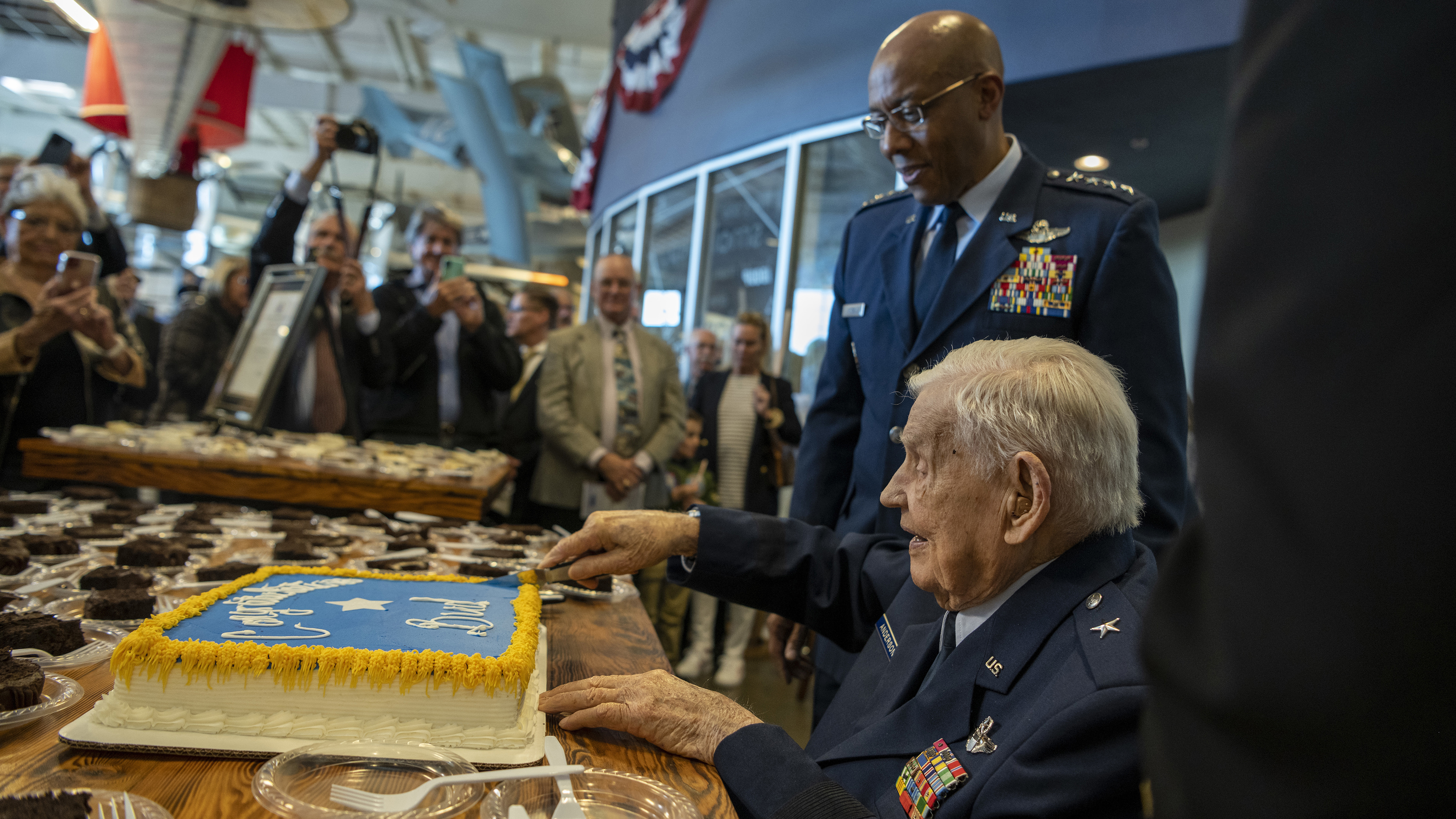Triple Ace Bud Anderson dies at 102
Clarence Emil "Bud" Anderson, a renowned World War II fighter pilot credited with 16 kills over Europe, died at home in Auburn, California, on May 17. He was the last surviving triple ace of the war and counted Chuck Yeager and R.A. “Bob” Hoover among his friends during a military flying career that spanned four decades.
As a member of the 357th Fighter Group Anderson flew bomber escort missions from November 1943 through January 1945. He gained a reputation as a skilled and fierce pilot at the controls of a succession of P–51 Mustangs named Old Crow, after a brand of Kentucky straight bourbon that he and other young pilots favored. He flew 116 missions, logging 480 combat hours.
“On the ground, he was the nicest person you’d ever know, but in the sky, those damned Germans must’ve thought they were up against Frankenstein or the Wolfman.”
After the war, Anderson worked as a U.S. Air Force test pilot at Wright-Patterson Air Force Base in Ohio, where he flew a wide range of experimental aircraft. One of the more interesting projects was a parasite fighter concept for which a Republic F–84 fighter was modified and attached to a Convair B–36 bomber, where it could be launched on defensive missions and retrieved afterward. Following stints at the Air Command and Staff College and the 58th Fighter-Bomber Wing in Osan (now South Korea), he moved to Edwards Air Force Base in California, where he served as chief of flight test operations until 1962. His flying experience at Edwards, where he also served with Yeager, included some of the first Mach 2 jet fighters.
Anderson spent the remainder of the 1960s completing the Army War College, commanding the 18th Tactical Fighter Wing in Japan, and serving at the Pentagon. He returned to combat duty in 1970 as commander of the 355th Tactical Fighter Wing, where he flew 25 attack missions against enemy supply lines in Vietnam.
When Anderson retired from the military in 1972, he had received numerous awards including five Distinguished Flying Cross medals, 16 Air Medals and the French Legion of Honor and Croix de Guerre.
After his military career Anderson managed flight test operations for McDonnell Douglas Aircraft at Edwards until 1998. Among the projects he supervised were the F–15 Eagle, F/A–18 Hornet, and Boeing C–17 Globemaster. During his long career, Anderson flew more than 130 aircraft types including the Bell P–39 Airacobra, which has the distinction of being his original Old Crow.
"Bud was an incredible aviator, but more than that he was a humble, kind, and fun-loving guy," said AOPA President Mark Baker. "We are extremely grateful for his lifetime of dedicated service to this country and our condolences are with his loved ones."





